The Harley-Davidson Sportster Brewtown Throwdown
Four teams travel to Milwaukee to build four Sportsters in 48 hours: minimum spend and maximum fun
No motorcycle in Harley-Davidson’s 115-year history has been as successful or versatile as the Sportster. The Sportster line has been in production now for over 60 years and has left its mark on just about every genre of motorcycling you could possibly imagine. From dirt tracking to road racing, hill climbing to commuting, chopping to touring and everywhere in between – there is very little the Sportster can’t do.
Three weeks ago, Harley-Davidson pulled the veil off of two new versions of its 1200 Sportster – the Iron 1200 and Forty-Eight Special. The two new models join the Forty-Eight, 1200 Custom and Roadster in the 1,202cc Evolution V-twin-powered Sportster lineup. As a testament to the Sportster’s vast capability as a canvas of endless customization possibilities, Harley-Davidson invited us to Milwaukee to take part in the Sportster Brewtown Throwdown.
The idea was simple: four teams, four Sportsters and four completely different builds. Each team got a brand new Forty-Eight Special, Iron 1200, 1200 Custom or Roadster as their starting platform. In addition, a small budget for genuine Harley-Davidson P&A (Parts & Accessories) and the help and tools of a local H-D dealership – which, come to find out, there are at least four of in the immediate Milwaukee area. No real surprise, though, Milwaukee is Harley-Davidson’s birthplace and headquarters after all…
Each of the four bone-stock Sportsters would be transformed into a café racer, a flat-tracker, a bobber and a chopper, but we only had 48 hours to complete the transformation before unveiling them at Flat Out Friday, on the eve of Mama Tried. Yikes – that’s alotta work and not alotta time. Bet you can’t guess which team I was selected to…
Our team was small, and comprised of Chris Graves, Harley’s P&A Product Manager, Ryan Achterhof, from Hal’s H-D service department, and myself. Chris is a custom bike builder in addition to his role at Harley-Davidson and has built some truly awesome choppers and even had one on display at Mama Tried. Ryan is a certified H-D mechanic with over 10 years experience who can tear down and rebuild any hog while blindfolded with his hands tied behind his back. And me? I’ve tinkered, toyed, broke, built, rebuilt, chopped, customized and worked on more Sportsters than any other bike. I currently have four Harleys in my garage with a fifth on its way; three of them are Sportsters. The other is a Shovel, and the fifth is a Pan I’m currently helping my roommate build. So, you could say there’s a fair bit of knowledge and experience between the three of us when it comes to knowing our way around Harleys.
Prior to arriving in Milwaukee, the team jumped on a couple Skype calls to discuss the direction of our build, which was a “dark vintage/retro custom” theme. Being chopper guys and knowing that certain parts could be repurposed into key chopper components, we figured we could save some of our budget by using parts we already had. Our original plans and aspirations for what the bike could become might have been a little ambitious for such a tight window to make it all happen, though.
Since our goal was to build a chopper, we figured we’d build a proper chopper. That meant foot clutch, jockey shift and no front brake – no posers here. If we were going to do it, we were going to do it right. As a disclaimer, however, we don’t encourage everyone or especially new riders to do this due to the obvious increased risk – choppers are for life in the slow lane and relaxed cruising, not corner carving or red-light racing.
To build the jockey shift/foot clutch setup, we took the clutch cable, shortened it and connected it to the existing shifter pedal with a pair of wire cable clamps, which would now serve as our clutch. We made a simple bracket by bending a small piece of flat stock steel and drilling a few holes – two to mount to the existing footpeg bracket and one to run the repurposed clutch cable through to have the pedal’s leverage moving in the right direction. There was no fancy or advanced fabrication. Anyone with a vise and a hand drill can easily whip this up in an hour or less.
Now that we had a clutch, we needed a shifter. Keeping with the resourceful chopper mentality of repurposing existing parts, we took a kickstand and shortened it on both ends. We then drilled two holes and threaded one end so we could mount our shifter handle’s grip – an old glass doorknob. Using the existing shifter arm and linkage, we turned the shifter arm about 180 degrees vertically so the linkage would connect to the kickstand shifter handle. We also made a simple bracket for the shifter handle that mounted to the primary cover using the existing bolts and presto! Again, no fancy tools or experience required.
We decided to swap out the forks with longer, 6-inch-over tubes, and because there was no front brake, there was no need for the caliper/front fender mounts, so we shaved the lower legs and cleaned them up using a lathe. Chris Graves built the bars from scratch and machined holes so that we could run internal wiring and further add to the clean, stripped-down look.
Using an angle grinder with a cutting wheel, we lopped off the back portion of the rear fender. Since the taillight was mounted to what was just removed, we used a Roland Sands Design license plate/taillight relocation kit that mounted to the bottom-left shock bolt, which moved everything to the side and out of the way. We originally wanted to hard-tail the Sportster, but that type of customization was just too ambitious to get done within our 48-hour time frame.
To clean up the look of the 1200 Custom that we started off with even further, we relocated the ignition coil from behind the neck and under the gas tank to where the horn was mounted. We now had a nice window between the top of the front rocker box and the frame’s backbone, which gave the appearance of a “frisco-style” mounted gas tank. We also relocated the speedometer to the frame’s left down tube with a Joker Machine kit.
Like I mentioned before, we had a budget for some genuine Harley-Davidson P&A, but until this point, we made use of what we already had or lying around (with the exception of the Joker Machine speedo and RSD license plate/taillight relocation kits). This goes to show that with a little bit of creativity, a Sportster owner can start customizing their bike with minimal to no cost. But since we had this budget and were going for a “dark vintage/retro custom” theme, we made use of Harley’s Brass Collection. Brass parts replaced the air filter cover, derby cover, timing cover, axle and swingarm pivot covers, headbolt covers, fork cap covers, footpegs and grips.
Originally, I wasn’t sure how all these bolt-on brass parts would look, but they turned out quite nice and added some vintage patina flavor for sure. The Sportster 1200 Custom comes with a fat 16-inch front wheel from the factory, but having stretched the forks and thinned the whole bike, we swapped the 16 for a 21-inch wheel that would complement the Sporty chop much better. We also mounted an Avon Speedmaster tire in the front and an old NOS tire on the rear to complete the vintage/retro look.
As a final touch, we bolted on a Burly Brand sissy bar, wrapped the exhaust headers and installed Screamin’ Eagle performance mufflers. The hard work was just about done, all that was left was paint. The in-house guys at Hal’s H-D handled that for us. They painted or powdercoated the rear fender, gas tank, side covers, cam cover, pushrod tubes, fork lowers, handlebars and rocker boxes. I’m probably forgetting some smaller tidbits but you get the idea. Now, we just had to put it all back together, fire it up, test ride it and get it to Flat Out Friday to unveil alongside the other three teams’ builds.
Each team had their own unique inspiration and direction they would take their Sportster build, and honestly I think they all turned out great, even if some teams had more help than others. The whole purpose of Harley-Davidson’s Sportster Brewtown Throwdown wasn’t a competition to see who could build the coolest or most radical bike, but rather to demonstrate how any Sportster owner can easily and attainably transform and customize their bike to truly make it their own.
With the exception of building and welding the bars, and using a lathe to shave the legs, all the work we performed was done with a basic set of tools any motorcycle owner should have. Mix in a little creativity, motivation and time spent in the garage, and a Sportster owner can transform their bike into whatever they want. And you don’t have to buy a brand new bike to do it, either – there’s plenty of used Sportsters out there that anyone can pick up anywhere from $1,500 to $5,000.
Though often poked at or made fun of, the Sportster is quite possibly my favorite H-D platform, and not for what they are necessarily, but for what they can be. It’s a virtually unkillable motorcycle, right at home as a chopper, dirt-tracker, café, bobber or scrambler and does each with minimal spend and maximum fun. Riding a motorcycle already sets you apart from the pack, but changing it up to suit your needs or match your style is what really makes them (and you) cool. After all, who wants to just ‘blend in’? Not motorcyclists.
I know that writing this story will stir up mixed opinions about Harley-Davidson and their motorcycles. Maybe you don’t like the style, the culture or the performance compared to other types of bikes – that’s fine – but you can’t say the Motor Co.’s rebellious nature hasn’t intrigued you at some point as a motorcyclist. Harley-Davidson is as American as apple pie, and I believe it embodies the American spirit as well as our country’s proud history of grit, perseverance and patriotism. Harley-Davidson has been around for 115 years now and it’s not going anywhere but forward.
Some may disagree, but riding a Harley is unlike any other motorcycle. Sure, some owners may give H-D a bad rap, but you can’t deny some sportbike riders don’t do the same. If you haven’t ridden a Harley yet, you should. It might just change your whole outlook on the brand. At the end of the day, though, who cares? There’s no wrong way to have fun on two wheels and all that matters is that you ride, regardless of what type of motorcycle you’re on.
As always, be safe and have fun.
More by Brent Jaswinski



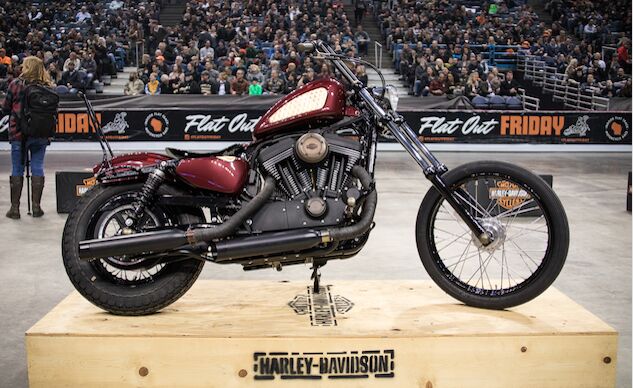
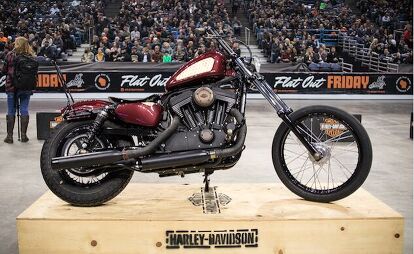






















































































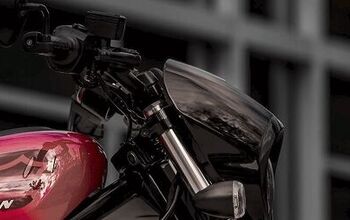
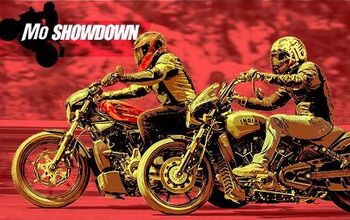

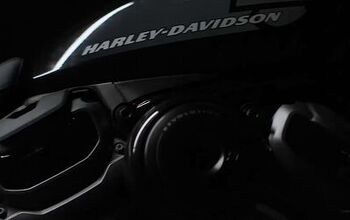












Comments
Join the conversation
Bobber, chopper, dirt track Hooligan, cafe racer, all from the same base. This is exactly why I love sportsters! Great story!
pretty tame. but a few nice trix.